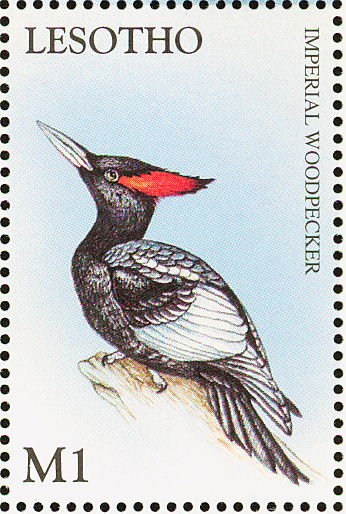
September 26, 2006

Are folks still interested in the search for the world’s biggest woodpeckers, the Ivory-billed and the Imperial Woodpeckers?
According to reports being published on September 26, 2006, and summarized in the Mobile, Alabama Press-Register, a haven for ivory-billed woodpeckers has been discovered in Florida.
Auburn University researchers published evidence today of what some are describing as an ivory-bill woodpecker “Shangri-La” in the Florida Panhandle, a couple of hours east of Mobile.
Researchers said they’ve had 13 sightings of the ivory bill, long thought to be extinct, and have recorded some 300 distinctive calls and sounds associated with the giant woodpecker, the largest in the United States and a virtual Holy Grail for many birders.
In a paper to be published today in the online journal Avian Conservation & Ecology, the researchers also will provide evidence of some 20 roost cavities in the Choctawhatchee River basin north of Panama City, Fla., and distinctive foraging techniques they believe to be unique to ivory bills.
There is no photographic evidence, though.
“We’ve got bad video,” the Auburn team’s lead researcher, Geoff Hill, said of footage his team shot in Florida. “We decided bad video is worse than no video, and it distracts from what is our good evidence.”
And later….
Instead of photographs, Hill and the Auburn team have assembled other lines of evidence — audio recordings of about 200 calls with a distinctive sound, often described as a “kent,” and 100 double raps; roost cavities that Hill said are much larger than cavities made by other Southern birds he’s analyzed; and an unusual pattern of bark removal, which Hill and his colleagues believe is most likely produced by the ivory bill’s large beak and powerful chiseling.

Still I wonder, are people even interested any longer? I once asked here, “Could 2006 be the Year of the Imperial Woodpecker?”. In that earlier mostly ignored blog, I pondered the new Mexican sightings. But only a few people seemed to care. Are the discoveries of “extinct” woodpeckers yesterday’s news?
This male and female pair (below) of Imperial Woodpeckers are part of the collection of the Centennial Museum, University of Texas at El Paso, and clearly show the black crest of the female, reported in the 2005 sighting. (Image courtesy of the Centennial Museum, The University of Texas at El Paso. Photograph taken by Scott Cutler)
About Loren Coleman
Loren Coleman is one of the world’s leading cryptozoologists, some say “the” leading living cryptozoologist. Certainly, he is acknowledged as the current living American researcher and writer who has most popularized cryptozoology in the late 20th and early 21st centuries.
Starting his fieldwork and investigations in 1960, after traveling and trekking extensively in pursuit of cryptozoological mysteries, Coleman began writing to share his experiences in 1969. An honorary member of Ivan T. Sanderson’s Society for the Investigation of the Unexplained in the 1970s, Coleman has been bestowed with similar honorary memberships of the North Idaho College Cryptozoology Club in 1983, and in subsequent years, that of the British Columbia Scientific Cryptozoology Club, CryptoSafari International, and other international organizations. He was also a Life Member and Benefactor of the International Society of Cryptozoology (now-defunct).
Loren Coleman’s daily blog, as a member of the Cryptomundo Team, served as an ongoing avenue of communication for the ever-growing body of cryptozoo news from 2005 through 2013. He returned as an infrequent contributor beginning Halloween week of 2015.
Coleman is the founder in 2003, and current director of the International Cryptozoology Museum in Portland, Maine.
Filed under Breaking News, Cryptotourism, CryptoZoo News, Cryptozoology, Extinct, Eyewitness Accounts, Ivory-Billed Woodpecker